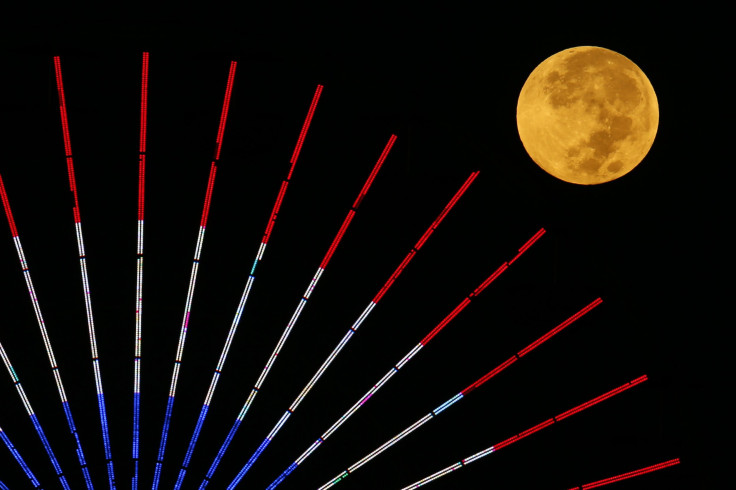Blood Moon Live Stream: Watch The Total Lunar Eclipse Rise Over The Pacific Ocean

If you're looking for an easy and exciting astronomy event, look no further than Saturday's total lunar eclipse. The "blood moon" will rise over the Pacific Ocean early Saturday morning and you only need to be in the right place for maximum enjoyment. If you're too far east to experience the event, Slooh will have a total lunar eclipse live stream that begins at 6 a.m. EDT (3 a.m. PDT). NASA and a whole host of observatories also will have total lunar eclipse broadcasts.
A total lunar eclipse happens when the sun, Earth and the moon are aligned. The moon passes into the Earth's shadow and the sun's light is beamed onto it to create the "blood moon" effect. The Earth's atmosphere eliminates the blue light, which creates the red-copper color, NASA explains. The event begins with a partial lunar eclipse at 6:16 EDT. Totality begins at 7:58 a.m. EDT (4:58 a.m. PDT), but don't expect the eclipse to be an extended viewing event. In fact, it's going to be the shortest total lunar eclipse of the century, lasting all of five minutes. April's lunar eclipse is the third in a "lunar tetrad" -- a series of four total lunar eclipses that take place approximately every six months. The next total lunar eclipse will happen in September.
The total lunar eclipse will be visible from the West Coast of the United States, Hawaii, Japan, Australia, China and Southeast Asia. The East Coast of the United States can view a partial eclipse relatively low on the horizon in the early morning hours of Saturday. There also will be live streams from Hanoi, the Sydney Observatory and the Hong Kong Observatory.
"Just a few weeks ago we were marveling at the incredible sight of the totally eclipsed Sun on Slooh. Now it’s the moon’s turn to take center stage," Slooh astronomer Will Gater said in a statement. "Total lunar eclipses, like the one we’re looking forward to on April 4, are a slow, ethereal affair and, as usual, we’ll have cameras around the world bringing us live views. What better way to start the day than tuning in to watch this wonderful event."
NASA will have astronomer Mitzi Adams fielding questions about the total lunar eclipse during a live stream that begins at 6 a.m. EDT (3 a.m. PDT). Viewers can ask questions through NASA Marshall Space Flight Center's Twitter account.
© Copyright IBTimes 2025. All rights reserved.






















